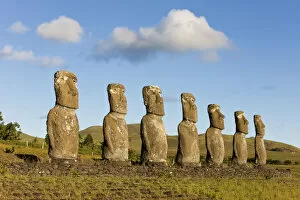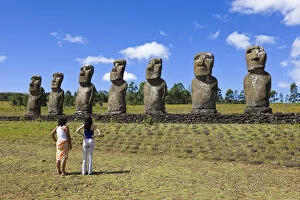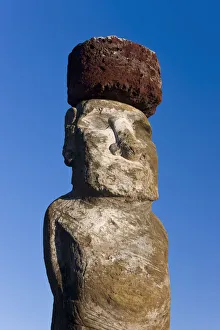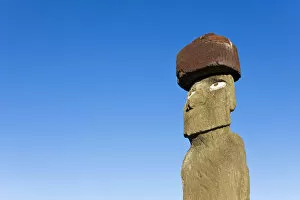Maoi Statues Collection
"Discover the Enigmatic Maoi Statues of Easter Island" Easter Island, also known as Rapa Nui in the local language
All Professionally Made to Order for Quick Shipping
"Discover the Enigmatic Maoi Statues of Easter Island" Easter Island, also known as Rapa Nui in the local language, is home to one of the world's most intriguing archaeological wonders - the monolithic giant stone Moai statues. Located off the coast of Chile, this remote island is a treasure trove for history enthusiasts and adventure seekers alike. One cannot visit Easter Island without witnessing the breathtaking sight of Ahu Nau Nau at Anakena beach. Here, a row of imposing Moai statues stands proudly against the backdrop of turquoise waters and golden sand. These ancient figures exude an aura of mystery that has captivated visitors for centuries. Another remarkable site on this enigmatic island is Ahu Akivi, where seven monolithic stone Moai statues are aligned perfectly to face sunset during equinoxes. This unique astronomical alignment showcases not only the incredible craftsmanship but also hints at a deep understanding of celestial movements by its creators. For those seeking grandeur on an epic scale, Ahu Tongariki awaits your arrival. It holds claim to being the largest ahu on Easter Island with fifteen majestic Moai statues standing tall in perfect harmony. The sheer size and precision involved in their construction leave spectators awestruck. Journeying further into Rano Raraku reveals yet another marvel - a giant monolithic stone Maoi statue emerging from its volcanic birthplace. This colossal figure serves as a testament to human ingenuity and determination. Ahu Vai Uri offers an opportunity to witness more moai stone statues scattered across its sacred grounds. Each statue carries with it stories untold, inviting us to unravel their secrets while paying homage to those who came before us. Amongst these stoic figures lies Ahu Ko Te riku - adorned with a distinctive topknot representing spiritual power and authority; it remains one-of-a-kind among all other moai sculptures found on Easter Island.










